
Volkswagen Golf GTI (2009-2012) review
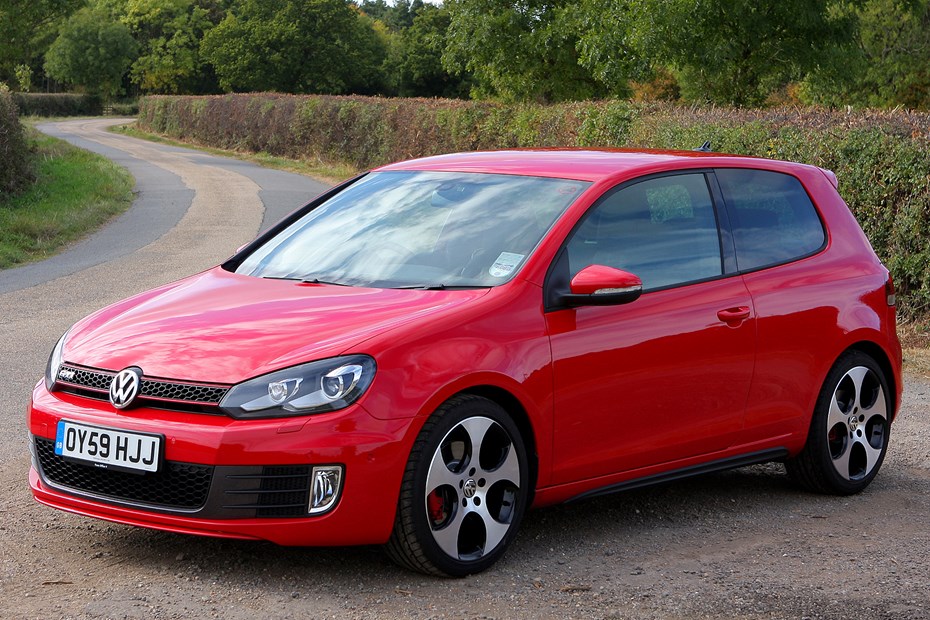
At a glance
| Price new | £25,040 - £29,505 |
|---|---|
| Used prices | £2,609 - £7,008 |
| Road tax cost | £315 - £395 |
| Insurance group | 35 |
Get an insurance quote with

|
|
| Fuel economy | Not tested to latest standards |
| Range | 411 - 460 miles |
| Number of doors | 3 - 5 |
| View full specs for a specific version | |
Available fuel types
Petrol
Pros & cons
- Mk6 GTI an outstanding all-rounder
- Great performance
- Agility, comfort and practicality
- Quicker Edition 35 is rare, carries over older tech
- Less overtly sporty styling than some
- TSI engine not as robust as previous GTIs
Volkswagen Golf GTI (09-12) rivals
Overview
The original Volkswagen Golf GTI kicked off the hot-hatch trend in the late 1970s, and became more than just a great all-round fast family hatchback; it’s a cult icon and a byword for accessible ’80s excess. Consistent quality and reliability, plus sensible running costs, make every generation of Golf GTI an excellent used car to buy even if you don’t prioritise performance.
As cars became more refined, substantial and sophisticated the Golf – and the GTI – lead the way, never losing the sparkling performance (at least for the best versions). The 2009-2013 Golf GTI Mk6 is effectively a thorough re-working of the previous version, itself a superb performance hatch.
It comes with a more powerful 2.0-litre TSI engine, with a chassis tuned for sharp handling without compromising on comfort. And while it provides most of the thrills that more powerful rivals can offer, it is utterly painless to use as everyday transport for a family.
VW Golf GTI Mk6 known faults and common problems
This is one of Volkswagen’s best efforts, with technology and engineering honed across millions of cars built for a wide range of brands within Volkswagen Group. It hits the sweet spot of clever engineering and efficiency without being too complex. With the Golf R assuming the responsibility of outright performance, the GTI is not too highly strung or delicate.
Which is partly how the fuel injected original won over customers in the late ’70s era of roadgoing rally cars and carburettors. Now more than ever, the Golf GTI is notable for how well it has adhered to Volkswagen’s initial, much-loved GTI concept.
You can have three- or five-door Golf GTIs in Mk6 flavour, with the five-door commanding slightly higher prices. It’s worth looking for the latest model you can find in your budget when browsing cars for sale, as many improvements were introduced during production.
1. Service history and overall neglect
The GTI was offered at a time of peak cut-price lease deals and many cars were just a monthly cost for flash transport rather than a cherished, expensive dream car. VW’s long-life service concept could be quite the opposite, so look for lots of stamps and invoices and clean oil. Green oil indicates VW’s extended interval has been followed, which on older cars can lead to problems.
2. Timing chain failure
This is a recurring theme for early examples of the new generation of VW engines, and the 2009-2011 Golf GTI Mk6 with the EA888 engine is the one to pay extra attention to when buying. The timing chain tensioner works under controlled oil pressure, and neglected maintenance can cause premature wear or even sudden failure.
Listen for clattering rattles when starting up from cold as an early warning. A very worn engine will chatter at idle with a metallic sound. If you go to see a car at a dealer and it’s already warmed up or running ‘for you’, that’s a sign to be particularly diligent about your checks.
High mileage engines can suffer timing chain stretch. This can be checked with a VAG.com diagnostic computer, an OBD-II code reader that supports the right live data streams, or you can look through an inspection plug to see how many links the tensioner is pushing into view.
3. Upgrades and modifications
The Golf GTI has always been popular with modifiers and tuners, and there are many performance upgrades for the EA888 Gen. 2, so make sure any changes are something you want. Not all upgrades are for performance – for example, early cars may have had replacement timing chain tensioners, with later parts being much improved. That’s an upgrade worth seeking out.
4. GTI Edition 35 EA133 engine
The 235hp 2.0-litre turbo in the VW Golf GTI Edition 35 has a timing belt, so make sure it has been changed correctly on high-mileage examples – though by now, all Edition 35s should have had a belt change on time alone. Oil leaks, misfires, oil consumption and wear of the camshaft drive for the high-pressure fuel pump are the main problems, but the main thing to look for is a history of regular oil changes, ideally less than 9,000 miles or one year apart.
5. PCV (positive crankcase ventilation) system
Both models of Golf GTI can suffer carbon build up and blocked PCV systems, which can ultimately cause oil leaks including the expensive to repair rear seal. Lift the dipstick out a little bit when the car is idling, and it should stutter and sound like it might stall. If the engine note doesn’t change, it probably needs the PCV system cleaning – but that can imply further issues.
6. Carbon build up – valves and intake/inside the engine
Some fuels and usage patterns can cause an unusually high amount of carbon build up inside the engine, due to the direct-injection system. This is exacerbated if low quality oil is used, early high oil consumption was not treated, or services have been ignored. The car will feel down on power, and give poor economy – in the example linked, there is also a clue that your code reader could tell you there’s a problem.
Cars run on high-quality fuels such as Shell V-Power should take longer for deposits to be a problem.
7. Automatic – DSG gearbox
It seems counterintuitive to choose the automatic version of a hot hatch, but the DSG is quicker. Both the Golf GTI Mk6 and the GTI Edition 35 could be ordered with the optional dual-clutch six-speed DSG and can be prone to juddering, jerky changes and loss of reverse gear.
Most of these issues can be avoided by proactive maintenance, such as ensuring the gearbox oil is changed frequently. The DQ250 uses a wet clutch design and while the clutch pack is expensive compared with a manual car, it does contain both sets for the car.
Mechatronic systems can be recalibrated with a simple process, but on higher mileage cars wear is inevitable. Budget £1,500 to £2,500 for a specialist to overhaul or exchange a DSG gearbox to a good standard. If you smell sulphur or see oil leaking around the DSG control module and plugs you can anticipate a £1,000 bill in the near future for a replacement Mechatronic – though if you can DIY car electronics, it’s not too complicated to clean up and repair before causing bigger problems.
8. Bodywork and trim – paint problems
In common with many cars produced after environmental improvements in paint technology, the Golf Mk6 can display poor paint finish from the factory and has a tendency for cosmetic rust on arches and in the bottom of the doors (listen for water sloshing in the door and feel for damp carpets, as the seals can fail). As a performance brand, extra diligence looking for accident damage is recommended – check the panel gaps at the front and look around the seams in the boot floor.
9. Suspension, steering and tyres
Check the inner edges of the front and rear tyres for uneven wear, though the design tolerances of the Mk6’s suspension can allow this without there being a fault. Look for kerbing damage on the inside of the rim and sidewalls.
Steering on the GTI can be sensitive to wheel alignment and the condition of the rear suspension as well. If there’s unusual resistance, it’s worth getting a specialist to check it all, including position of the subframes and rack.
You may have seen references to an electronic differential called XDS. When VW introduced the Mk6 GTI it showed a Haldex-style additional clutch to control wheelspin mounted on a driveshaft (tech often called an e-diff). We can’t find any evidence for this being fitted until the Mk7 as the optional VAQ, and the 2009-2013 Golf GTI relies on ABS braking and software for traction control.
10. Electronics and gadgets
Though dated, the Golf GTI’s infotainment is still very usable – check it works rather than assuming you’ll replace it. Air conditioning compressors are prone to failure so it’s unlikely to just need a regas at this age.
Enthusiasts are prone to ‘hacking’ the GTI, such as making the XDS more aggressive. Ask if any changes have been made, and if they can be returned to standard if you don’t like the result.
What’s it like inside?
The tartan seat trim on standard models harks back to the earliest versions of the GTI and is one of the feel-good elements of owning one. To distinguish it from the standard Golf there’s also a flat-bottomed steering wheel and a sportier gear lever – although the distinctive ‘golf ball’ gear knob that featured on the previous and later GTIs was dropped. Elsewhere there’s red stitching and unique dials, adding to the sporty trim.
Like the standard Golf, the finish and quality of materials used is first class and the cabin has a refined and sophisticated feel.
The Mk6 GTI shares many of the strengths of the standard Golf, with a roomy interior, excellent refinement and noise suppression, plus air conditioning as standard. At low speeds it’s as docile and easy to drive as a standard Golf. While there is very little noise intrusion, the exhaust has been tuned to give it a sporty sound without losing refinement for motorway drives – a balance that may be lost when aftermarket exhausts are fitted.

Practicality
The Mk6 GTI has the same boot space as the standard Golf. It’s also virtually identical to the previous version of the hot hatch with a minimum capacity of 350 litres, extending up to more than 1,300 litres with the rear seats folded. This isn’t as large as other hatchbacks like the Ford Focus, but the tailgate offers slightly better access than on the previous model with a broader opening.
In the front the glove compartment and other storage areas are usefully large while the door pockets have sculpted bottle holders.
What’s it like to drive?
A 211hp 2.0-litre TSI turbocharged petrol engine is used in the Mk6 GTI. New to the range for this generation, the EA888’s power doesn’t look like a big upgrade from the Mk5 GTI’s 2.0T FSI, but the car feels a little livelier at lower revs than the fifth-generation model. The 211hp GTI’s wide power band starts at 1,700rpm, and holds all the way to 5,200rpm, making the Golf Mk6 GTI responsive on the move and keen when overtaking.
The anniversary-marking Golf GTI Edition 35 retains the GTI Mk5’s EA113 engine with 235hp, and is essentially a detuned, front-wheel drive Golf R. It’s the Golf GTI Mk6 to buy if you want the best performance, and is relatively easy to find for sale with only a small premium to pay.
A six-speed manual gearbox is the default and the easiest to find. It feels slick and precise in typical Volkswagen fashion. The alternative is an optional six-speed DSG with steering wheel-mounted paddles.
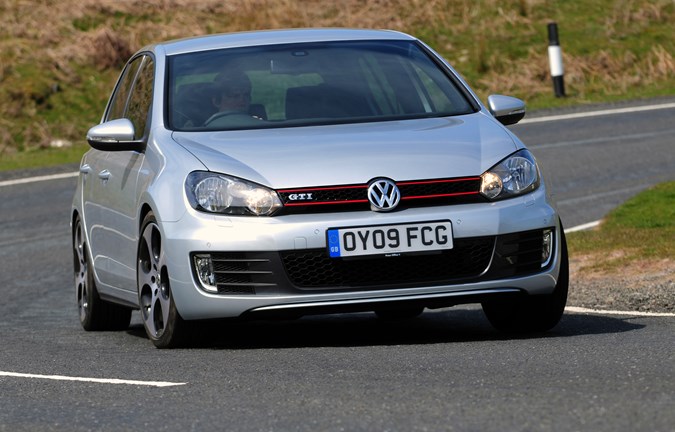
Comfort
High performance versions of family cars often make occupants suffer over poor road surfaces with stiff suspension creating a harsh ride. However, the Golf GTI offers a far more supple ride than might be expected in a hot hatchback. The suspension is lower than the standard Golf, but seems to lose little of the standard car’s ride comfort. It also uses electronics to help improve drive out of slower corners.
A system called XDS – which is more sophisticated than traction control – allows smoother acceleration with less wheelspin. It’s an enjoyable car to drive on challenging roads, with engaging steering, which is neither too light nor too heavy, and remains composed when cornering. If there is a criticism, it’s that the Mk6 GTI makes driving hard feel far less dramatic than it perhaps should.
You may find more expensive used Golf GTIs have the optional ‘adaptive chassis control’ system, which allows the driver to tailor the car’s behaviour according to road conditions. The ‘normal’ setting is similar to that of a standard GTI, but there are additional ‘comfort’ and ‘sport’ modes. Selecting ‘sport’ also makes the steering feel sharper.
Ownership costs and MPG
Although the Golf was a little pricier new than many rivals, such as the Ford Focus ST or Honda Civic Type R, depreciation has always been a strong suit for the GTI and the best examples still command strong money. At the budget end of the market you may find the technically similar Audi A3 offers better value.
Key to the success of the Golf GTI is efficiency – and the Mk6 can offer surprisingly good fuel consumption – almost 40mpg in everyday driving. Volkswagen servicing is best via an independent specialist, so a Golf GTI isn’t necessarily an expensive car to own.
Safety
The Mk6 GTI’s standard equipment includes front and side airbags, a driver’s side knee airbag, and front and rear curtain airbags. Side airbags for rear passengers could be chosen as an option. Electronic stability control is also standard. Like its predecessor it was awarded a five-star rating by Euro NCAP for adult occupant safety along with four stars for child safety. It was also given five stars under the new Euro NCAP crash rating scheme.
Introduced in 2009, the revised overall rating covered not only adult occupant safety but included child and pedestrian safety along with a rear impact whiplash test.
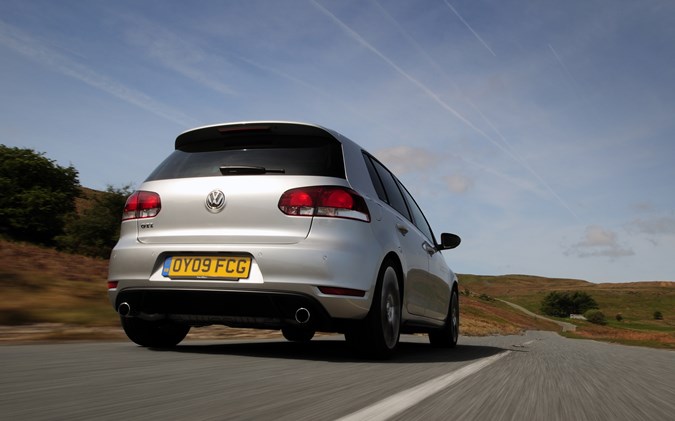
As with all used purchases, do remember to get a car history check. It might just save you from an unpleasant surprise later down the line. Also, don’t forget you can use our valuation tool to get an idea of how much you should be paying for a car. You can also check our reviews section for more information about the cars you are interested in.




.jpg)




.jpg)

.jpg)
.jpg)
.jpg)


.jpg)
.jpg)
.jpg)
.jpg)





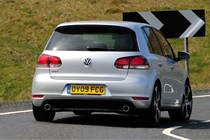

.jpg)
.jpg)
.jpg)
.jpg)
.jpg)
.jpg)
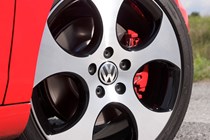
.jpg)
.jpg)
.jpg)
.jpg)
.jpg)
.jpg)
.jpg)
.jpg)
.jpg)
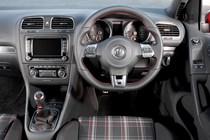
.jpg)
.jpg)
.jpg)
.jpg)
.jpg)
.jpg)
.jpg)


.jpg)
.jpg)
.jpg)
.jpg)
.jpg)
.jpg)
.jpg)
.jpg)
.jpg)
.jpg)
.jpg)
.jpg)
.jpg)
.jpg)
.jpg)
.jpg)
.jpg)
.jpg)
.jpg)





.jpg?quality=50)




.jpg?quality=50)

.jpg?quality=50)
.jpg?quality=50)
.jpg?quality=50)


.jpg?quality=50)
.jpg?quality=50)
.jpg?quality=50)
.jpg?quality=50)







.jpg?quality=50)
.jpg?quality=50)
.jpg?quality=50)
.jpg?quality=50)
.jpg?quality=50)
.jpg?quality=50)

.jpg?quality=50)
.jpg?quality=50)
.jpg?quality=50)
.jpg?quality=50)
.jpg?quality=50)
.jpg?quality=50)
.jpg?quality=50)
.jpg?quality=50)
.jpg?quality=50)

.jpg?quality=50)
.jpg?quality=50)
.jpg?quality=50)
.jpg?quality=50)
.jpg?quality=50)
.jpg?quality=50)
.jpg?quality=50)


.jpg?quality=50)
.jpg?quality=50)
.jpg?quality=50)
.jpg?quality=50)
.jpg?quality=50)
.jpg?quality=50)
.jpg?quality=50)
.jpg?quality=50)
.jpg?quality=50)
.jpg?quality=50)
.jpg?quality=50)
.jpg?quality=50)
.jpg?quality=50)
.jpg?quality=50)
.jpg?quality=50)
.jpg?quality=50)
.jpg?quality=50)
.jpg?quality=50)
.jpg?quality=50)